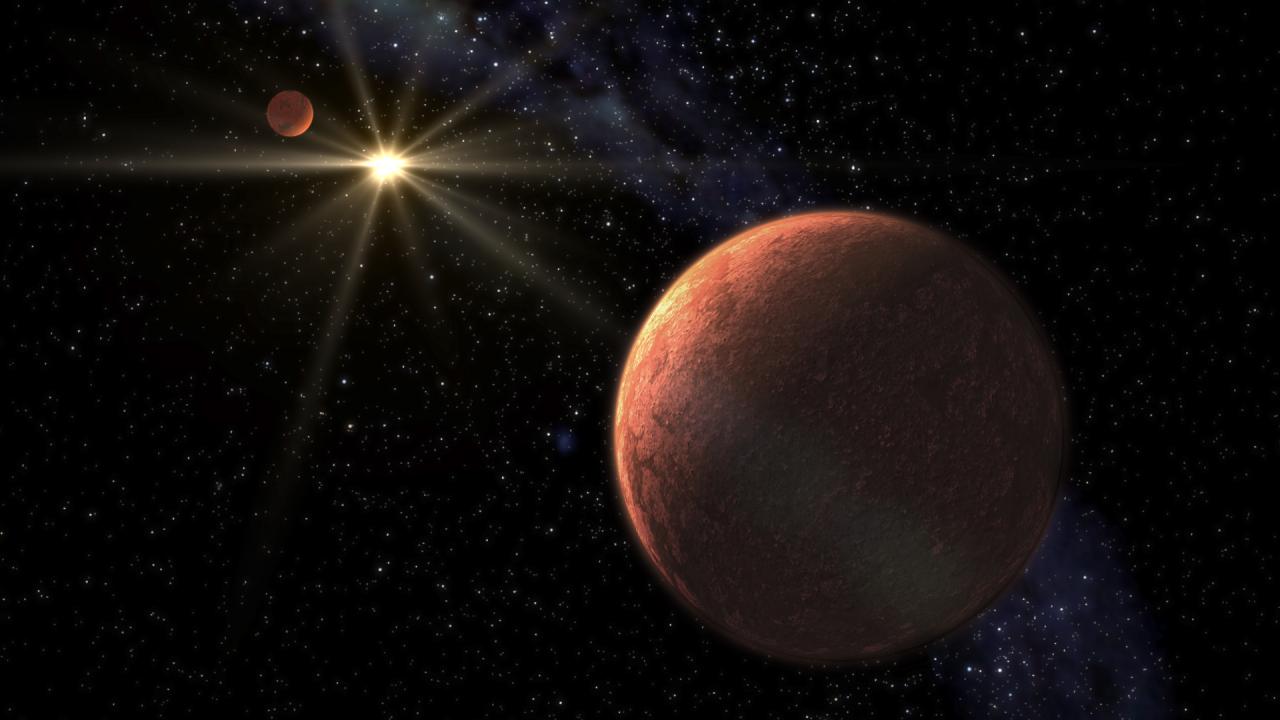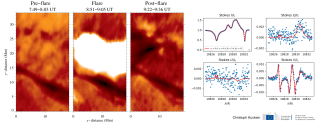General
Our goal is to study the processes that lead to the formation of low mass stars, brown dwarfs and planets and to characterize the physical properties of these objects in various evolutionary stages. Low mass stars and brown dwarfs are likely the most numerous type of objects in our Galaxy but due to their low intrinsic luminosity they are not so well known. We aim to study the frequency, multiplicity and spatial distribution of these objects in the solar neighbourhood and in nearby star forming regions and stellar clusters in order to better understand the mechanism of formation, characterise their optical and infrared properties and establish the relation between spectral properties, mass and luminosity.. Most of our effort will be dedicated to push toward lower mass limits the detection of these astros either bounded to stars and brown dwarfs and/or free-floating in interstellar space. The lowest mass objects display a lower intrinsic luminosity and cooler effective temperatures thus they are remarkably difficult to detect using direct imaging techniques. However, these techniques allow a full photometric and spectroscopic characterization and a best determination of their physical and chemical properties. We also aim to investigate the presence of planets around low mass stars using radial velocity measurements and techniques for high spatial resolution imaging. We will develop ultrastable spectrographs for large telescopes and systems for ultrafast imaging. With the spectrographs it would be possible to detect planets of similar mass to the Earth around G, K and M-type stars. The goal is to establish the frequency of these planets in stars of the solar neighbourhood and characterise the properties of the associated planetary systems.
Members
Results
- The optical and near-infrared sequence of 10 Myr-old L dwarfs in the nearest OB association to the Sun, Upper Scorpius
- The lithium depletion boundary of the Hyades cluster.
Scientific activity
Related publications
-
HORuS transmission spectroscopy of 55 Cnc e
The High Optical Resolution Spectrograph (HORuS) is a new high-resolution echelle spectrograph available on the 10.4-m Gran Telescopio Canarias (GTC). We report on the first HORuS observations of a transit of the super-Earth planet 55 Cnc e. We investigate the presence of Na I and Hα in its transmission spectrum and explore the capabilities of
Tabernero, H. M. et al.Advertised on:
82020 -
Two close binaries across the hydrogen-burning limit in the Praesepe open cluster
We present Keck I/OSIRIS and Keck II/NIRC2 adaptive optics imaging of two member candidates of the Praesepe stellar cluster (d = 186.18 ± 0.11 pc; 590-790 Myr), UGCS J08451066+2148171 (L1.5 ± 0.5) and UGCS J08301935+2003293 (no spectroscopic classification). We resolved UGCS J08451066+2148171 into a binary system in the near-infrared, with a K-band
Lodieu, N. et al.Advertised on:
82020 -
The CARMENES search for exoplanets around M dwarfs. Convective shift and starspot constraints from chromatic radial velocities
Context. Variability caused by stellar activity represents a challenge to the discovery and characterization of terrestrial exoplanets and complicates the interpretation of atmospheric planetary signals. Aims: We aim to use a detailed modeling tool to reproduce the effect of active regions on radial velocity measurements, which aids the
Baroch, D. et al.Advertised on:
92020 -
Characterization of the K2-38 planetary system. Unraveling one of the densest planets known to date
Context. An accurate characterization of the known exoplanet population is key to understanding the origin and evolution of planetary systems. Determining true planetary masses through the radial velocity (RV) method is expected to experience a great improvement thanks to the availability of ultra-stable echelle spectrographs. Aims: We took
Toledo-Padrón, B. et al.Advertised on:
92020 -
Confirming new white dwarf-ultracool dwarf binary candidates
We present the results of a study to discover prospective new white dwarf-L dwarf binaries as identified by their near-infrared excesses in the UKIDSS catalogue. We obtained optical spectra to validate the white dwarf nature for 22 of the candidate primary stars, confirming ten as white dwarfs and determining their effective temperatures and
Hogg, M. A. et al.Advertised on:
82020 -
The CARMENES search for exoplanets around M dwarfs. Variability of the He I line at 10 830 Å
The He I infrared (IR) triplet at 10 830 Å is known as an activity indicator in solar-type stars and has become a primary diagnostic in exoplanetary transmission spectroscopy. He I IR lines are a tracer of the stellar extreme-ultraviolet irradiation from the transition region and corona. We study the variability of the He I triplet lines in a
Fuhrmeister, B. et al.Advertised on:
82020 -
The CARMENES search for exoplanets around M dwarfs. Measuring precise radial velocities in the near infrared: The example of the super-Earth CD Cet b
The high-resolution, dual channel, visible and near-infrared spectrograph CARMENES offers exciting opportunities for stellar and exoplanetary research on M dwarfs. In this work we address the challenge of reaching the highest radial velocity precision possible with a complex, actively cooled, cryogenic instrument, such as the near-infrared channel
Bauer, F. F. et al.Advertised on:
82020 -
Search for the sub-stellar lithium depletion boundary in the open star cluster Coma Berenices
Aims: We mainly aim to search for the lithium depletion boundary (LDB) among the sub-stellar population of the open star cluster Coma Berenices. Methods: Since the number of brown dwarf candidates in Coma Ber available in the literature is scarce, we carried out a search for additional candidates photometrically using colour-magnitude diagrams
Martín, E. L. et al.Advertised on:
82020 -
Precise mass and radius of a transiting super-Earth planet orbiting the M dwarf TOI-1235: a planet in the radius gap?
We report the confirmation of a transiting planet around the bright weakly active M0.5 V star TOI-1235 (TYC 4384-1735-1, V ≈ 11.5 mag), whose transit signal was detected in the photometric time series of sectors 14, 20, and 21 of the TESS space mission. We confirm the planetary nature of the transit signal, which has a period of 3.44 d, by using
Bluhm, P. et al.Advertised on:
72020 -
Revisiting Proxima with ESPRESSO
Context. The discovery of Proxima b marked one of the most important milestones in exoplanetary science in recent years. Yet the limited precision of the available radial velocity data and the difficulty in modelling the stellar activity calls for a confirmation of the Earth-mass planet. Aims: We aim to confirm the presence of Proxima b using
Suárez Mascareño, A. et al.Advertised on:
72020 -
A crucial test for astronomical spectrograph calibration with frequency combs
Laser frequency combs (LFCs) are well on their way to becoming the next-generation calibration sources for precision astronomical spectroscopy 1-6. This development is considered key in the hunt for low-mass rocky exoplanets around solar-type stars whose discovery with the radial-velocity method requires cm s -1 Doppler precision 7. In order to
Probst, Rafael A. et al.Advertised on:
22020 -
The CARMENES search for exoplanets around M dwarfs. The He I infrared triplet lines in PHOENIX models of M 2-3 V stars
The He I infrared (IR) line at a vacuum wavelength of 10 833 Å is a diagnostic for the investigation of atmospheres of stars and planets orbiting them. For the first time, we study the behavior of the He I IR line in a set of chromospheric models for M-dwarf stars, whose much denser chromospheres may favor collisions for the level population over
Hintz, D. et al.Advertised on:
62020 -
First detection of two superoutbursts during the rebrightening phase of a WZ Sge-type dwarf nova: TCP J21040470+4631129
We report on photometric and spectroscopic observations and analysis of the 2019 superoutburst of TCP J21040470+4631129. This object showed a 9 mag superoutburst with early superhumps and ordinary superhumps, which are the features of WZ Sge-type dwarf novae. Five rebrightenings were observed after the main superoutburst. The spectra during the
Tampo, Yusuke et al.Advertised on:
62020 -
The CARMENES search for exoplanets around M dwarfs. Dynamical characterization of the multiple planet system GJ 1148 and prospects of habitable exomoons around GJ 1148 b
Context. GJ 1148 is an M-dwarf star hosting a planetary system composed of two Saturn-mass planets in eccentric orbits with periods of 41.38 and 532.02 days. Aims: We reanalyze the orbital configuration and dynamics of the GJ 1148 multi-planetary system based on new precise radial velocity measurements taken with CARMENES. Methods: We combined new
Trifonov, T. et al.Advertised on:
62020 -
The CARMENES search for exoplanets around M dwarfs. A super-Earth planet orbiting HD 79211 (GJ 338 B)
Aims: We report on radial velocity time series for two M0.0 V stars, GJ 338 B and GJ 338 A, using the CARMENES spectrograph, complemented by ground-telescope photometry from Las Cumbres and Sierra Nevada observatories. We aim to explore the presence of small planets in tight orbits using the spectroscopic radial velocity technique. Methods: We
González-Álvarez, E. et al.Advertised on:
52020 -
The CARMENES search for exoplanets around M dwarfs. Characterization of the nearby ultra-compact multiplanetary system YZ Ceti
Context. The nearby ultra-compact multiplanetary system YZ Ceti consists of at least three planets, and a fourth tentative signal. The orbital period of each planet is the subject of discussion in the literature due to strong aliasing in the radial velocity data. The stellar activity of this M dwarf also hampers significantly the derivation of the
Stock, S. et al.Advertised on:
42020 -
The CARMENES search for exoplanets around M dwarfs. Radial velocities and activity indicators from cross-correlation functions with weighted binary masks
Context. For years, the standard procedure to measure radial velocities (RVs) of spectral observations consisted in cross-correlating the spectra with a binary mask, that is, a simple stellar template that contains information on the position and strength of stellar absorption lines. The cross-correlation function (CCF) profiles also provide
Lafarga, M. et al.Advertised on:
42020 -
Nightside condensation of iron in an ultrahot giant exoplanet
Ultrahot giant exoplanets receive thousands of times Earth's insolation 1,2. Their high-temperature atmospheres (greater than 2,000 kelvin) are ideal laboratories for studying extreme planetary climates and chemistry 3-5. Daysides are predicted to be cloud-free, dominated by atomic species 6 and much hotter than nightsides 5,7,8. Atoms are expected
Ehrenreich, David et al.Advertised on:
32020 -
First discovery of an ultra-cool white dwarf benchmark in common proper motion with an M dwarf
Ultra-cool white dwarfs are among the oldest stellar remnants in the Universe. Their efficient gravitational settling and low effective temperatures are responsible for the smooth spectra they exhibit. For that reason, it is not possible to derive their radial velocities or to find the chemistry of the progenitors. The best that can be done is to
Lam, M. C. et al.Advertised on:
22020 -
USco1621 B and USco1556 B: Two wide companions at the deuterium-burning mass limit in Upper Scorpius
Aims: Our objective is to identify analogues of gas giant planets, but located as companions at wide separations of very young stars. The main purpose is to characterise the binarity frequency and the properties of these substellar objects, and to elucidate their early evolutionary stages. Methods: To identify these objects, we cross correlated the
Chinchilla, Patricia et al.Advertised on:
12020



